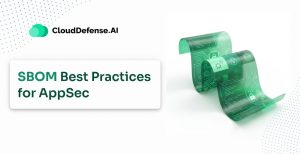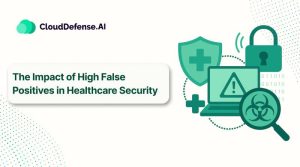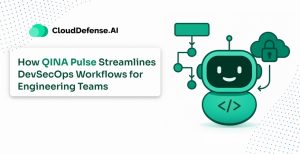What is AIOps?
AIOps stands for Artificial Intelligence for IT Operations. It’s a term that Gartner came up with, and it’s basically about using AI to make IT management smoother and more automated. In other words, it’s a relatively new approach that combines big data, machine learning, and artificial intelligence to improve and partially automate IT operations.
At its core, AI-Ops is about using advanced technology to help IT teams work more efficiently. It collects data from various IT tools and systems, analyzes this data in real-time, and uses the insights to identify and even predict issues before they become major problems.
Think of AI-Ops as a smart assistant for IT teams. It can:
- Monitor systems continuously
- Detect patterns that humans might miss
- Alert staff to potential issues early on
- Suggest or even implement solutions automatically
- Help make sense of the massive amount of data generated by modern IT systems
The cool thing about AI-Ops is that it brings together a bunch of different IT tools into one smart platform. This means IT teams can respond to problems faster – sometimes even before they happen.
AIOps is becoming a big deal because it helps bridge the gap between complex IT systems and what users expect – which is for everything to work perfectly all the time. With more companies focusing on digital transformation, AIOps is quickly becoming the go-to solution for managing IT operations. Many experts think it’s the future of IT management, and its popularity is only growing.
Why is AIOps Crucial?
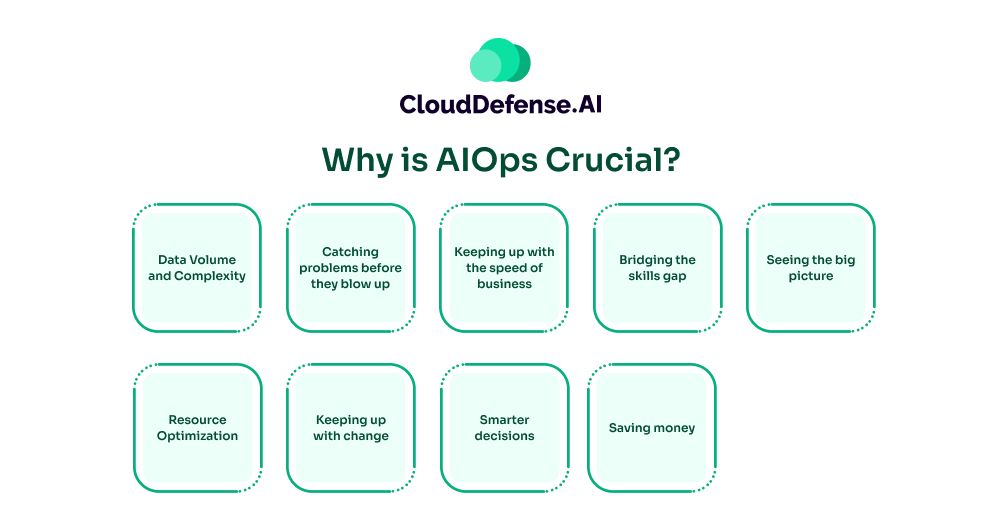
Data Volume and Complexity
Remember when managing IT meant keeping an eye on a few servers? Those days are long gone. Now, we’re drowning in data from countless sources – cloud services, apps, networks, you name it. AI-Ops steps in to handle this data overload, making sense of it all so IT teams don’t lose their minds.
Catching problems before they blow up
Nobody likes it when systems crash. It’s bad for business and it ticks off customers. AIOps is all about catching problems early – sometimes before they even happen. It helps IT teams fix issues faster by pinpointing exactly what’s wrong. This means less downtime and happier users.
Keeping up with the speed of business
In today’s world, businesses move fast. Really fast. IT needs to keep up, and the old ways of doing things just can’t cut it anymore. AI-Ops brings that much-needed speed, automating tasks and making decisions in seconds that might take humans hours or even days.
Bridging the skills gap
Let’s face it – finding and keeping skilled IT pros is tough. AIOps helps bridge this gap by taking on a lot of the grunt work. This frees up your IT team to focus on the big-picture stuff that really needs their expertise.
Seeing the big picture
IT setups are getting more complicated. You’ve got stuff in the cloud, stuff on-site, old tech, new tech – it’s a mess. AIOps helps make sense of it all. It shows how everything’s connected, which is a big help when you’re trying to keep everything running smoothly
Resource Optimization
Let’s be real – IT teams are often asked to do more with less. AIOps takes care of the boring, repetitive stuff so your team can focus on the important work. It’s like having extra team members without the extra cost.
Keeping up with change
The tech world moves fast. There’s always something new to learn. AIOps helps IT teams stay on top of these changes without constantly having to retrain. It adapts quickly to new situations, which is pretty handy.
Smarter decisions
With AIOps, you’re not just guessing. You’ve got solid data backing up your choices. Whether you’re fixing a problem or planning for the future, AIOps gives you the info you need to make smart calls.
Saving money
At the end of the day, businesses care about the bottom line. AIOps can help cut costs by reducing downtime, automating expensive manual processes, and helping IT teams work more efficiently. It’s a win-win for everyone involved.
How does AIOps work?
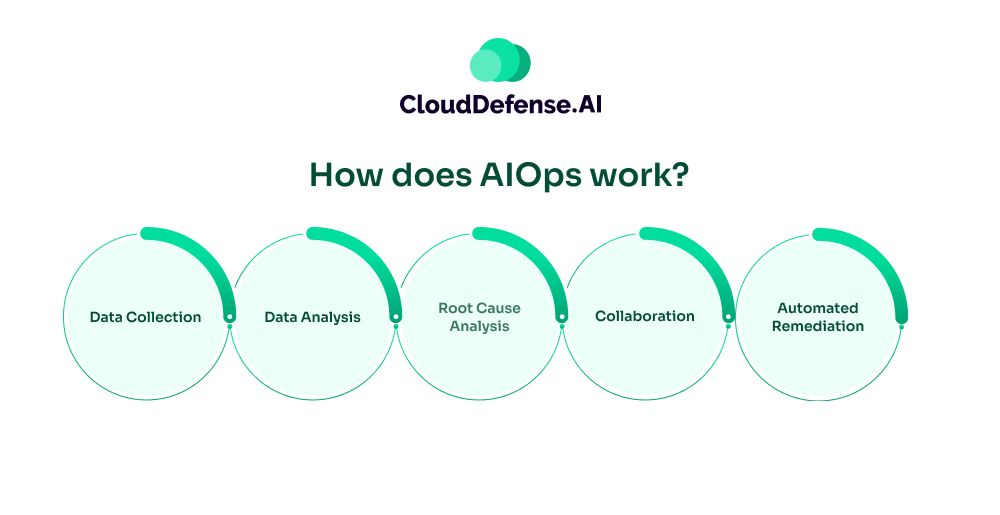
Let’s break down the process of how AIOps actually does its thing. It’s not magic, but it’s pretty impressive tech that works in several key steps.
Data Collection
First up, AIOps casts a wide net. It gathers data from all over your IT setup – we’re talking about logs from your apps, event data, configuration info, incident reports, performance stats, and even network traffic. It’s not picky either – it’ll take structured data like databases and unstructured stuff like social media posts or documents. Basically, if it’s data related to your IT operations, AIOps wants it.
Data Analysis
Once it’s got all this data, AIOps rolls up its sleeves and gets to work. It uses machine learning algorithms to sift through everything. It’s looking for weird patterns, anomalies, or anything that doesn’t quite fit. This step is crucial because it helps separate the real issues from false alarms.
Root Cause Analysis
When AIOps spots an issue, it doesn’t just raise an alarm and call it a day. It digs deeper to figure out why the problem happened in the first place. This root cause analysis is super helpful for IT teams. Instead of just putting out fires, they can understand why the fires are starting and prevent them in the future.
Collaboration
After figuring out what’s wrong and why, AIOps makes sure the right people know about it. It sends notifications to the appropriate teams or individuals, giving them the info they need to tackle the problem. This is especially handy when you’ve got IT staff spread out across different locations. Plus, it keeps a record of what happened, which can be useful for solving similar issues down the line.
Automated Remediation
Here’s where AIOps really shines. For some issues, it can actually fix the problem automatically. This could mean scaling up resources, restarting a service, or running pre-set scripts to address common problems.
Stages of the AIOps process
Data gathering
AIOps tools collect data from all IT areas, monitoring both virtual and physical environments. They aggregate logs, tickets, and monitoring outputs.
Data Analysis
Machine learning algorithms analyze data to find patterns, detect anomalies, and identify root causes across IT systems.
Problem-solving
AIOps performs root cause analysis to pinpoint issue sources, helping IT teams prevent future occurrences.
Collaboration
Relevant groups are alerted with key information, promoting effective collaboration and preserving event data.
Auto Remediation
AIOps quickly resolves incidents automatically, reducing manual work through actions like scaling resources or restarting services.
Key AIOps Use Cases
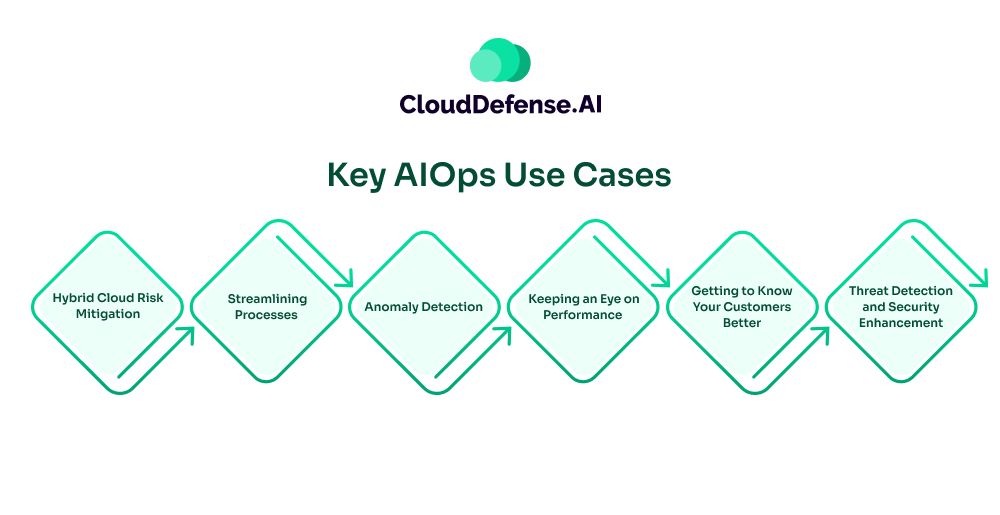
Hybrid Cloud Risk Mitigation
Hybrid cloud setups can be tricky, with lots of moving parts that might cause hiccups in efficiency or accuracy. AIOps steps in to smooth things out, making sure everything runs like clockwork across different cloud environments.
Streamlining Processes
For big companies with complex IT systems, AIOps is a game-changer. It automates tedious tasks, spots issues before they blow up, and helps teams communicate better. This is especially handy when you’re juggling lots of different tech and tools.
Anomaly Detection
AIOps is like a super-smart detective. It sifts through mountains of historical data, picking up on patterns that humans might miss. This means it can pinpoint problems and their root causes way faster than we can.
Keeping an Eye on Performance
Modern apps can be a maze of different resources and layers. AIOps acts like a high-tech watchdog, monitoring everything from storage to cloud infrastructure. It tracks things like how much resources are being used, if everything’s up and running, and how quickly systems are responding. Plus, it’s great at connecting the dots between different events, giving you a clearer picture of what’s going on.
Getting to Know Your Customers Better
AIOps helps businesses tune into what their customers really want. It gathers real-time data from customer interactions, helping companies fine-tune their products and boost satisfaction over time.
Threat Detection and Security Enhancement
When it comes to security, AIOps is like having an extra set of eyes. It scans through logs, network traffic, and security events, quickly spotting any fishy activity. This means faster responses to potential threats and a more secure system overall.
Final Words
The rapid ascent of AIOps in enterprise environments is nothing short of alarming. As organizations across industries increasingly rely on this technology to manage their complex data ecosystems, we stand at a critical juncture. With the AIOps market poised for explosive growth – projections reaching a staggering 119.3 billion by 2034 – we must ask ourselves: are we prepared for the consequences?
Such unprecedented adoption rate raises serious questions about over-reliance on AI, potential job displacements, and the erosion of human expertise in IT operations. As AIOps infiltrates every corner of ITOM functions, we must remain vigilant and critically examine its long-term impacts on our workforce and technological autonomy.

